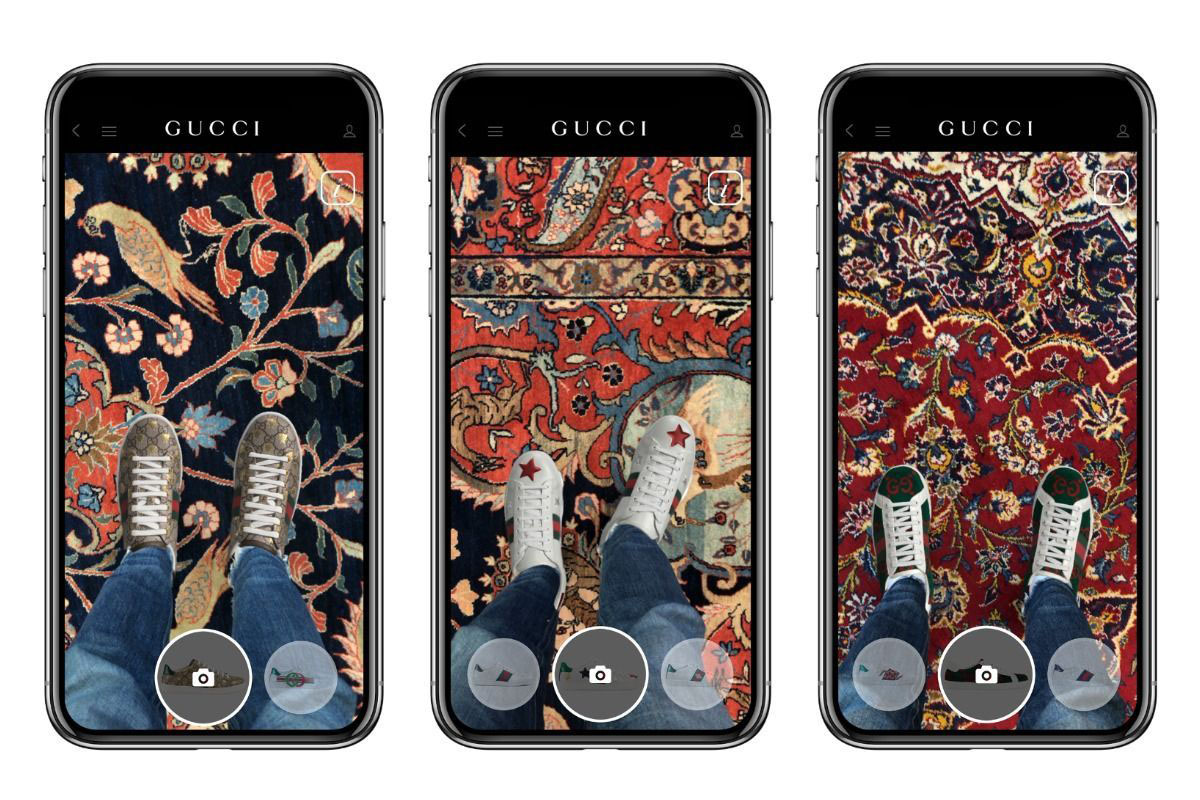2022: A Year of Consumer Exploration and eCommerce Acceleration
COVID-19 isn’t over, but it’s time for eCommerce, retailers, and retail executives to look ahead to when it will be over, and reimagine shopping for a digital-first and hybrid world. In doing so, they must consider the many ways in which consumer behavior was permanently affected during the pandemic.
The time between 2020 and 2021 will mark the time when digital-first behaviors, en masse, sparked an unprecedented wave of consumer exploration across the digital landscape -- more discovery, more streaming and gaming, and more interest in, and spending on, sporting goods, furniture, consumer electronics, and personal technology. Though eCommerce was accelerating before the COVID-19 pandemic, it’s now exploded. Brands and businesses now know they need to be digital-first. But digitization isn’t enough. The challenge for online retailers is distinguishing themselves from competitors and using digital to deliver experiences that match or even outperform real world shopping.
So, the question eCommerce and retailers must ask themselves is: how can we differentiate and where can we add value?

The answer is by using innovative tech to create innovative customer experiences. For example, in a world that suddenly shifted to e-commerce overnight, one area where brands could introduce new and better digital experiences was online shopping itself. With innovative visual technologies such as 3D and augmented reality (AR), brands could quickly break away from static, two-dimensional grid layouts of traditional online shopping sites?
In 2020, visual technologies such as AR and 3D have finally found their time in the spotlight, becoming the primary front on the eCommerce battlefield. Which industries need to implement 3D and AR technologies, and how can they get it done? While business-to-consumer facing brands such as retailers and consumer product goods companies are naturals, the truth is that any customer-facing business can benefit from 3D and AR today. From furniture to apparel and footwear to warehouse and manufacturing equipment to medical devices, and everything in between, these technologies help bring products to life in ways not popularized before the pandemic.
Not only does 3D and AR make products pop off the screen into augmented reality, they also allow customers to interact with products beyond conventional enlarge and rotate functions online today. The more that customers can interact with products, the more likely they are to convert and retain (read: not return) their purchases.
For instance, furniture is a popular application for 3D and AR, popularized by IKEA prior to the pandemic. Why? Visual technology is highly configurable, which proves useful for large portfolios. With furniture or decor, AR can be useful for space realization and assurance. Before a consumer buys a couch, for example, they want to know how it might look in their living or office space.
Other industries have taken their cues from furniture. Consider sporting goods. TaylorMade golf recognized both the utility and novelty of 3D when it enlisted Threekit to help create a custom experience for its SIM2 drive. Their premier product deserved a premier experience, particularly since it had the capacity to be customized from top to bottom. But their primary motivation was to increase online conversion by getting customers involved in the process. The good news is that it worked. They saw two times more website visits than forecasted and hit their 3 month sales goal in just 30 days.
Apparel and shoes are another industry that has greatly benefited from the use of visual technology to provide a personalized consumer experience. 3D and AR has brought luxury to the masses via virtual experiences.
A real-life example of visual technology in the designer shoe market is Gucci shoes. The Gucci virtual sneaker can be bought via the Gucci app and worn in AR, including in Roblox and VRchat. The virtual sneakers are much cheaper than a non-fungible token or NFT, and, for less than $20, the Gucci virtual sneaker is much cheaper than purchasing an actual pair of Gucci shoes.

But 3D/AR product visualization is not just for shiny consumer brands. Field services is an industry in which 3D and AR technologies are crucial. Field service management refers to the oversight of company resources that are used at, or on the way to, client property. Field services requires dispatching workers to customer locations to repair, install, or maintain client equipment or systems. Service is a huge industry -- it is one of Salesforce’s biggest Clouds. 3D and AR can be used to help field technicians actually see, diagnose, and repair in real time. It will totally change the way their work is done.
3D and AR Have Arrived
Here’s Your Playbook:
Ok, so maybe now you’re starting to think about 3D for your business. The truth is that it’s not a turn-key solution, but there are steps you can take to pave the way for success. Here’s the playbook.
01
Identify your “Why?”
Are you just trying to jump on the next best thing, or are you trying to solve a real problem? If it’s the latter, make sure that 3D and AR solutions actually add value to the customer experience. If you want to use AR for commodity items like office supplies or everyday dinnerware, it might not be useful since consumers understand those products too well. However, 3D/AR can be a cool addition and useful differentiator for customized or unique items, or items that need to fit in a specific space. If you decide you’re all in, move on to stage 2.
02
Shift your mindset...and spread the news
The process of procuring traditional product photography, while costly and logistically complicated, is a relatively linear process. You manufacture new products to feature then do an elaborate product (and sometimes lifestyle) photoshoot. Then it’s marketing’s “go time”.
Here’s the thing about 3D: Yes, it’s going to change the way you merchandise your product. But it will also transform your entire entire product lifecycle. Now you’ll be able to design, iterate, test, advertise, and sell products digitally before you even create them. In other words, it will enable full-scale digital transformation, and that has implications beyond any one department. So start thinking and in those terms and start talking about how it will impact your entire organization.
03
Get inspired
This is the fun part. Get out there and see how other brands, even those outside your industry, are using 3D and AR. A furniture brand using AR can provide perspective for the automaker thinking about how their vehicles might fit in different spaces and what that experience might look and feel like for a customer. The virtual photography experience from an apparel brand can inform UX design for the custom jewelry design shop. You never know what you’ll discover when you seek inspiration from early adopters.
04
Decide how big (or small) you want to start
You don’t have to flip the switch from traditional product images to 3D and AR overnight (though you may decide to). If you want to make incremental changes, consider revamping a smaller portion of your portfolio, or only starting with AR for your most popular item or SKU. You don’t have to eat the whole meal in a bite if it’s not aligned with your goals but no step towards progress is too small.
05
Get those 3D models
Having 3D models is essential to being a 3D/AR leader. If you don’t have them yet, find out what you do have, whether it’s CAD designs, renderings, or photos. You can also investigate what is needed to get models made.
06
Find the right partner(s)
Even the world’s premier brands rarely have the in-house expertise to go it alone in the 3D/AR world. The good news is that there are options -- agencies, freelance developers and software solutions can provide the right support to get going.
What’s Next for 3D and AR Visual Technologies?
Digital-first customer behaviors will continue to drive online growth while also demanding modernized physical and hybrid experiences. The future of 3D and AR visual technologies is here and limited only by your imagination for what’s possible. You are an architect of the future.
The magic lies in the convergence of experiential eCommerce, retail innovation, and 3D/AR and even virtual reality (VR) powered online and hybrid shopping centers. These experiences could mimic brick-and-mortar shopping experiences, but occur in your own home -- like window shopping in your living room.

Product placement in video games is another 3D/AR trend that is rapidly taking shape. 3D/AR can be used to furnish virtual spaces with products that people can buy. Video game characters can wear clothing and shoes that people can buy, like the virtual Gucci shoes mentioned above.
Makeup, shoe, and eyeglass brands are experimenting with AR Try-On today with moderate success, but what about being able to try on an entire ensemble virtually and make changes to it in real-time while you’re wearing it? Eyeglass retailer Warby Parker already has a Try-On feature in their app. Being able to buy clothes or other items directly from an AR Try-On could be a possibility in the future.


AR and 3D virtual technologies could also change the car sales process as we know it. Imagine customizing a car from your couch, then sitting in it and going for a virtual test drive from the comfort of your living room.
Brands would be wise to employ 3D and AR to deliver customer experiences that meet existing, unmet, or even unknown needs. People view 3D in video games and media all the time, so why not eCommerce? The truth is that there aren’t enough immersive solutions for online shopping; we know that 60% of shoppers want to shop in 3D and AR, but most eCommerce sites don’t have that technology. Today’s shoppers are ready. Are you?
